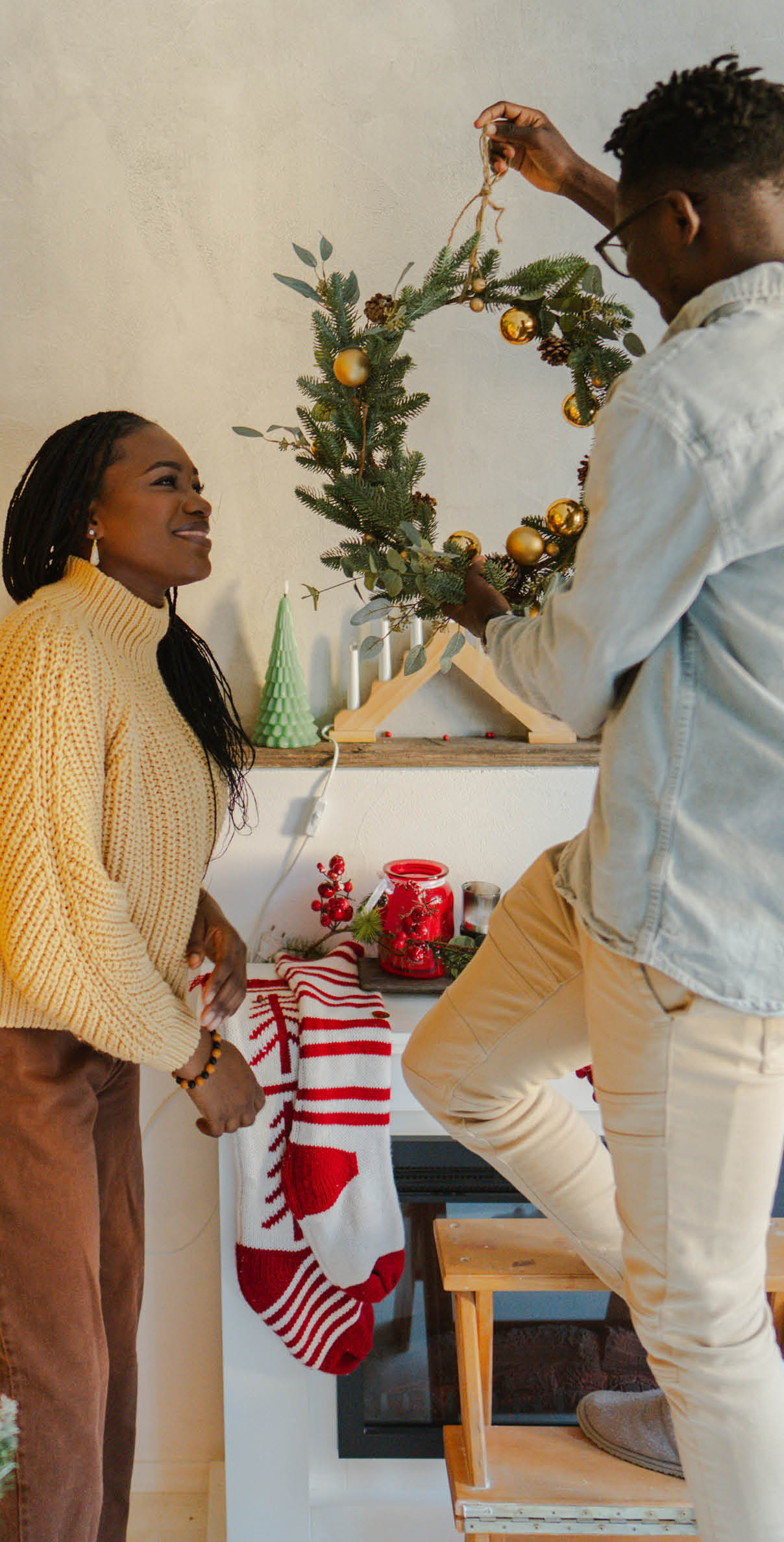
Decorate your home safely this holiday season
The holiday season is a great time to get festive, but decorations can be a real risk. From faulty lights to flammable trees, there may be potential for danger in the home. With a bit of preparation, you can “Deck the Halls” while avoiding danger. Follow these best practices and safety tips to protect your home and family during this holiday season.
Holiday decorating safety tips
Inspect your decorative lights
Before you go through the trouble of hanging up any lights, inspect each set for frayed wires, loose connections and other issues. If you find a problem strand, throw it away or fix repairable issues. While inspecting your lights, plug them in to make sure they’re working. According to This Old House, if you see holiday lights flickering or hear them buzzing, you need to replace bulbs or buy a new strand of lights.
Choose the right light
and more. They also suggest using light-emitting diode (LED) lights over incandescent bulbs from a safety aspect because they generate less heat. LED lights offer a variety of colors, and in recent years, warmer color temperatures that are reminiscent of traditional bulbs have been created by manufacturers. They also last longer and use less energy!
Tend to your tree
If you are celebrating Christmas and opting for a real tree, there are several safety tips you want to keep in mind. According to the National Fire Protection Association, Christmas trees cause an annual average of 155 home fires in the U.S. each year. The organization provides several tips to help reduce the risk of fires caused by a real tree.
When you select your tree, make sure it’s fresh, as a dry tree is more likely to catch fire. And when you get it home, add water daily to keep it hydrated and place the tree three feet from any heat source (i.e., candles, fireplaces and heat vents).
When the holiday season is over, do not store the tree in your garage or near your house. As the tree continues to dry out, the fire danger increases. Check to see if your community has a recycling program for Christmas trees!
You’re not completely out of the woods with an artificial tree either. According to the U.S. Consumer Product Safety Commission, you should check for fire resistant labels, decorate them with materials that aren’t hazardous and take other steps to stay safe.
Use caution with candles
Candles are comfy. Candles are cozy. Candles are a risk. All of these things are true. While candles can bring warmth and light to the holiday season, they can also bring real risk when used improperly. According to the U.S. Fire Administration, there are 20 home candle fires reported each day across the country. That’s more than 7,000 fires per year!
These candle safety tips will serve you through the holidays and throughout the rest of the year!
General holiday decorating safety tips
There are a lot more safety concerns to consider when decorating for the holidays. Here are some more rapid-fire suggestions to unwrap:
Put these tips to use and enjoy silent nights without worrying during this holiday season!
Inside Story is for educational and informational purposes only. Inside Story is compiled from various sources, which may or may not be affiliated with our family of companies, and may include the assistance of artificial intelligence. While we strive to provide accurate and reliable content, we make no warranties or guarantees about its completeness, accuracy, or reliability, and are not responsible for the content of any third-party sources or websites referenced herein. The inclusion of any content does not establish a business relationship or constitute our endorsement, approval, or recommendation of any third party. Testimonials and examples provided are for illustrative purposes only and do not guarantee future or similar results or outcomes, and may not consider individual circumstances, goals, needs, or objectives. Inside Story does not provide legal, tax, or accounting advice. For individual guidance, please consult a qualified professional in the appropriate field.
Coverages subject to policy terms, conditions, and exclusions. Subject to underwriting review and approval.